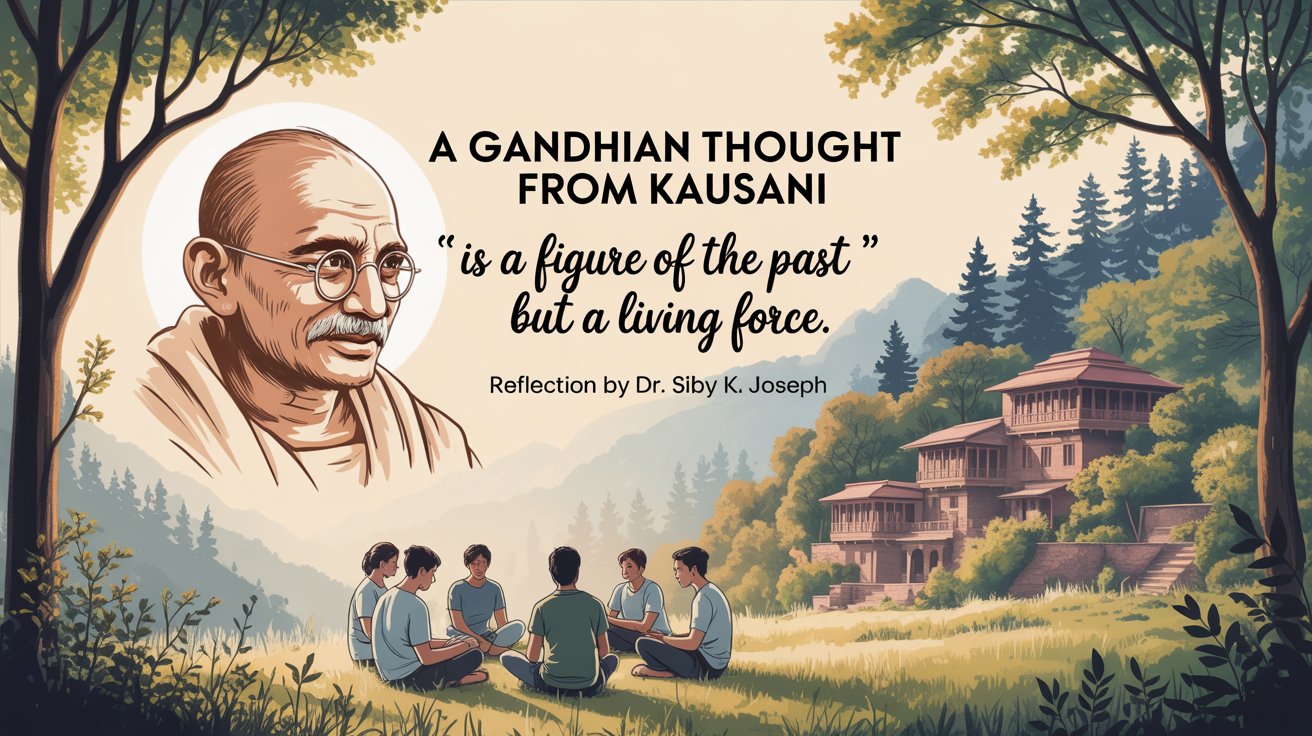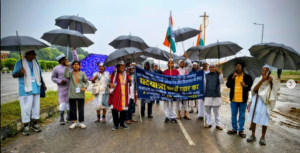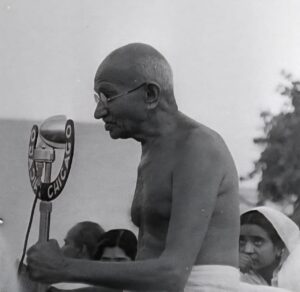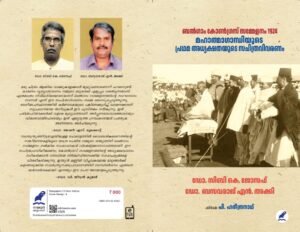Youth For Truth
The ownership and control of the means of production are the key determinants of an economic system. This characteristic shapes how resources are allocated, goods and services are produced, and how income and wealth are distributed. Different economic systems like capitalism, socialism, and mixed economies are distinguished by who owns and controls these means of production. The institution of private property and the pursuit of profit are the primary drivers of societal disparities in a capitalist system. The private ownership of the means of production under capitalism, using the frame of reference of Karl Marx, leads to exploitation of workers by capitalists who appropriate the surplus value created by labour. This, in turn, results in the concentration of wealth and power in the hands of the few and widens the gulf between rich and poor or haves and have-nots. The use of highly sophisticated technology further exacerbates the centralization of power and reinforces the capitalist system, as it often prioritizes individual rights, particularly the right to private property, inheritance, and profit, even when these benefits come at the expense of broader societal well-being. The current trend of AI-driven automation could further displace workers, leading to a concentration of wealth in the hands of tech giants and impacting the very fabric of democratic societies.
Gandhi’s philosophy of Trusteeship is considered as an alternative to both Marxist and Capitalist systems. It transcends the limitations of liberal management of private property as well as its collective management under the Marxist system. Trusteeship tries to combine the best elements of both Marxist and Capitalist systems. The beauty of trusteeship is that it retains both individual initiative and collective well-being of human beings. Gandhi’s concept of Trusteeship was basically addressed to the capitalists or the privileged classes who owned the lion’s share of wealth and resources in society through their own efforts or by virtue of inheritance. He wanted the capitalists to outgrow their greed and sense of possession and to come down, despite their wealth, to the level of those who earn their bread by the sweat of their brow. But one has to keep in mind that Gandhi’s idea of trusteeship was not limited to the capitalists alone. His concept of trusteeship was holistic and revolutionary in nature, aimed at transforming society on an egalitarian basis through non-violent means. It seeks to transform the very idea of ownership of capital and labour.
Gandhi viewed trusteeship as his means of nonviolent revolution aimed at the well-being of marginalized sections of society, including peasants and workers, who are the worst victims of the capitalist system. Gandhi believed that the capitalist system, with its inherent inequalities and exploitations, was unjust and needed to be changed. However, Gandhi had objections and reservations to the Marxist system, which ultimately turned out to be nothing more than state capitalism. Gandhi visualized an economic system that avoided the perceived downsides of both capitalism and Marxism. He viewed societal resources as common property and proposed a system of trusteeship where wealthy individuals would act as trustees for the collective good, using their resources for the benefit of all, rather than personal gain. Thus, in short, Gandhi’s approach tried to balance individual initiative with social responsibility, preventing both the inequalities of unchecked capitalism and the potential suppression of freedom found in a Marxist system.
An analysis of Gandhi’s concept of trusteeship gives us an impression that it evolved in the course of time. Gandhi was consistently trying to achieve the goal of attaining economic equality through non-violent means throughout his life. Even in his first seminal writing Hind Swaraj one could clearly see that his vision of a non-violent, non-exploitative ideal society primarily based on trusteeship lines.1 Gandhi considered economic equality as a necessary precondition for the attainment of swaraj. But his concept of economic equality fundamentally differed from the Marxist vision of the same. Like Gandhi, the Marxist also wanted to obliterate the inequality between the rich and the poor. They stood for the organization of the labouring class or proletariat against the capitalists based on its theory of class struggle. They advocated violent methods to topple capitalism and to bring about revolutionary socio-economic change. But Gandhi was of the view that the inequalities prevailing in the society could not be removed by accentuating the conflict between capital and labour but only through the coordination of the two for the welfare of the society. On the basis of his experience both in India and South Africa, he wrote in Young India in 1927, “I do not regard capital to be the enemy of labour.I hold their co-ordination to be perfectly possible. The organization of labour that I undertook in South Africa, Champaran or Ahmedabad was in no spirit of hostility to the capitalists. The resistance in each case and the extent it was thought necessary was wholly successful.” 2 He wanted a healthy relationship between capitalists and labourers and they should be considered as equal partners in the production process. Gandhi wrote in Young India “Each is dependent on the other. What is essential today is that the capitalist should not lord it over the labourer. In my opinion, the mill-hands are as much the proprietors of their mill as the shareholders, and when the mill owners realize that the mill-hands are as much mill-owners as they are, there will be no quarrel between them.”3
Though Gandhi pleaded for healthy relationship between capitalist and labourers, he was not advocating the continuance of the capitalist system by giving a human face to it. Gandhi’s attempt was ultimately to destroy capitalism and replace it with an alternative system based on non-violence through his principle of trusteeship. In such an ideal system, workers would realise their real strength and potential and contribute their maximum for the welfare of the society. That is why he asserted that “By the non-violent method, we seek not to destroy the capitalist, we seek to destroy capitalism. We invite the capitalist to regard himself as a trustee for those on whom he depends for the making, the retention and the increase of his capital. Nor need the worker wait for his conversion. If capital is power, so is work. Either is dependent on the other. Immediately the worker realizes his strength, he is in a position to become a co-sharer with the capitalist instead of remaining his slave.”4 This constructive approach was further elaborated by Gandhi when he said “they will become the real rulers and the employers will be their trustees and friends in need and deed. This happy state of things will come only when they know that labour is more real capital than the capital in the shape of gold and silver which labour extracts from the grounds of the earth.”5
It is to be noted that towards the end of 1920s the “Great Depression” overtook the world, particularly the capitalist system which appeared to be on the verge of collapse. In sharp contrast to it, the Soviet system under the Stalinist leadership remained virtually untouched by the onslaught of the economic crisis. Such a development created a very favourable and conducive environment for the Marxist system to appear as a strong and invincible economic order. A large number of intellectuals all over the world including those from India became well disposed towards Marxism. It was in this context that a new Marxist Party called Congress Socialist Party emerged in 1934 after the withdrawal of the Civil disobedience movement in May 1934. The Congress Socialists became very critical of Gandhian ideas particularly in the economic field. Perhaps it was in response to their criticism that Gandhi tried to elaborate on his principle of trusteeship which he had held as one of his basic principles for a long time.
Though Gandhi wanted to destroy capitalism, he was not much in favour of state ownership in the place of private ownership. This is evident from the reply he had given in response to the questions put forward by N. K. Bose in the course of an interview which was published in Modern Review of October 1935. He admits the fact that state ownership is better than private ownership, but it is objectionable on the grounds of violence. He said “It is my firm conviction that if the State suppressed capitalism by violence, it will be caught in the evils of violence itself and fail to develop non-violence at any time. The State represents violence in a concentrated and organized form. The individual has a soul, but as the State is soulless machine, it can never be weaned from violence to which it owes its very existence. Hence, I prefer the doctrine of trusteeship” Nevertheless in the same interview, he justified the use of minimum violence by the State in the case of persons who failed to behave as trustees. At the same he expressed the fear that the State may use too much violence against those who differ from it. In the interview he reminded Bose the stand he had taken in the Second Round Table Conference in 1931, viz. “that every vested interest must be subjected to scrutiny, and confiscation ordered where necessary with or without compensation as the case demanded.” It is true that in unavoidable situations he supported minimum State ownership. But personally, he was not much convinced about it. It is very much evident from one of his statements in the same interview. “What I would personally prefer would be not a centralization of power in the hands of the State, but an extension of the sense of trusteeship, as, in my opinion, the violence of private ownership is less injurious than the violence of the State. However, if it is unavoidable, I would support a minimum of State-ownership.” But he continued to remain suspicious of State power as he believed that “nowhere the State has really lived for the poor” Besides it is likely to destroy” individuality, which lies at the root of the progress.”6
Elaborating further his principle of trusteeship in 1939, he tried to make a more nuanced presentation of the theme. He pointed out that it was in early 1930s when the country was presented with socialist scheme of things in respect of zamindars and ruling chiefs, that he enunciated his principle of trusteeship as a counterpoise. Emphasizing the human aspect of trusteeship, he made it clear that the capitalist and zamindars would have to “outgrow their greed and sense of possession, and to come down in spite of their wealth to the level of those who earn their bread by labour “At the same he also underlined the fact that “the labourer has to realize that wealthy man is no less owner of his wealth than the labourer is owner of his own viz., the power to work.” Reflecting on the practical aspect of trusteeship he opined that “it is immaterial whether many live up to it or only one man lives up to it. The question is of conviction. If you accept the principle of Ahimsa, you have to strive to live up to it, no matter whether you succeed or fail. There is nothing in this theory which can be said to be beyond the grasp of intellect, though you may say it is difficult to practice.” 7 Such an approach of Gandhi along with his friendly relationship with the capitalists led to the misconception that he was a supporter of capitalism. Gandhi himself was aware of it and he frankly admitted that “I am not ashamed to own that many capitalists are friendly towards me and do not fear me. They know that I desire to end capitalism, almost, if not quite, as much as the most advanced Socialist or even Communist. But our methods differ, our languages differ.”8 At the same time, he forcefully asserts: “My theory of ‘trusteeship’ is no make-shift, certainly no camouflage. I am confident that it will survive all other theories. It has the sanction of philosophy and religion behind it. That possessors of wealth have not acted up to the theory does not prove its falsity; it proves the weakness of the wealthy. No other theory is compatible with non-violence. In the non-violent method the wrong-doer compasses his own end, if he does not undo the wrong. For, either through non-violent non-co-operation he is made to see the error, or he finds himself completely isolated.”9
When he was going through individual Satyagraha, he presented his ideas of national reconstruction in a new tract viz. Constructive Programme in 1941 which he has been emphasizing from his South African days. While describing economic equality in his work Constructive Programme, he termed it as the ‘master key to non-violent independence’.10 In the course of time, he realized the fact that it would be impossible to work towards economic equality without abolishing the eternal conflict between capital and labour. He wrote “A violent and bloody revolution is a certainty one day unless there is a voluntary abdication of riches and the power that riches give and share them for the common good”11 He wanted to bridge the wide gulf between the rich and the poor through the ideal of trusteeship. However, he was aware that it was difficult to reach that ultimate goal but at the same time it was worth pursuing. He completely adhered to the ideal of trusteeship throughout his life. In fact, he took a totally non compromising stand so far, his idea of trusteeship was concerned. So much so that he firmly stated that a trustee would have no natural heir and it would be regulated and decided by the society. As he put it “A trustee has no heir but the public. In a State built on the basis of non-violence, the commission of trustees will be regulated. Princes and zamindars will be on a par with the other men of wealth.”12 Such a categorical stand on trusteeship makes it clear that he was in no way defender of capitalism and its concomitant, the institution of private property.
Gandhi moved a step ahead in his interview to Louis Fischer in June 1942. He asserted in that interview that in the course of impending civil disobedience the peasants would stop paying taxes. Moreover “they will make salt despite official prohibition – their next step will be to seize the land”. When probed further by Fischer he admitted that there may be violence. “There may be fifteen days chaos” he remarked. In response to Fischer’s question regarding confiscation of land he averred that it had got to be without compensation as “it would be financially impossible for anybody to compensate the landlords.” It would be relevant to note that soon after the above interview Gandhi launched his Quit India movement in August 1942. He was arrested and imprisoned in the very beginning of the struggle. He remained in Jail from August 1942 to May 1944.It is to be noted that Gandhi’s prison days also provided him with an opportunity to do a lot of self-introspection and sharpen his insights on his favourite ideas and principles. Like the earlier times, he further improved upon his ideas of trusteeship during his stay at Aga Khan Palace as a prisoner. Gandhi had further discussion with Kishorlal Mashruwala, Narahari Parikh and others who reduced the principles of trusteeship into a practical formula in the form of draft. This draft was fine-tuned by the socialist leader M. L. Dantwala. Gandhi made some notable changes in the draft presented to him after his release from Aga Khan Palace and it took a final shape. The final draft is as follows:
Trusteeship provides a means of transforming the present capitalist order of society into an egalitarian one. It gives no quarter to capitalism, but gives the present owning class a chanceof reforming itself. It is based on the faith that human nature is never beyond redemption.
It does not recognize any right of private ownership of property except so far as it may be permitted by society for its own welfare.
It does not exclude legislative regulation of the ownership and use of wealth.
Thus under State-regulated trusteeship, an individual will not be free to hold or use his wealth for selfish satisfaction or in disregard of the interests of society
Just as it is proposed to fix a decent minimum living wage, even so a limit should be fixed for the maximum income that would be allowed to any person in society. The difference between such minimum and maximum incomes should be reasonable and equitable and variable from time to time so much so that the tendency would be towards obliteration of the difference.
Under the Gandhian economic order the character of production will be determined by social necessity and not by personal whim or greed.14
M. L. Dantwala’s meeting with Gandhi was on a Sunday, a day in which he observed silence. Therefore, the dialogue between them took place through slips of paper. In the process, Gandhi wrote down his acceptance, rejection and amendments in the draft and the reasons for it. A comparison of the changes made by Gandhi in the original draft prepared by M. L. Dantwala would give an idea of his revolutionary approach and its implications.15
Once the Labour Party came to power in England coupled with the Quit India Movement and revolt led by Subash Chandra Bose, it became clear that India would become independent sooner than later. Hence among the Indian leadership a discussion started being held about the kind of social order which would prevail in the post independent India. This is the context of correspondence between Gandhi and Jawaharlal about the thing to come once India became independent.16 As such Gandhi became more categorical about his idea of trusteeship which should mark the economic life of independent India. He stated “As for the present owners of wealth, they will have to make their choice between class war and voluntarily converting themselves into trustees of their wealth. They will be allowed to retain the stewardship of their possessions and to use their talent, to increase the wealth, not for their own sakes, but for the sake of the nation and, therefore, without exploitation. The State would regulate the rate of commission which they will get commensurate with the service rendered and its value to society. Their children will inherit the stewardship only if they prove their fitness for it. Supposing India becomes a free country tomorrow, all the capitalists will have an opportunity of becoming statutory trustees. But such a statute will not be imposed from above. It will have to come from below. When the people understand the implications of trusteeship and the atmosphere is ripe for it, the people themselves beginning with Gram panchayats will begin to introduce such statutes. Such a thing coming from below is easy to swallow. Coming from above it is liable to prove a dead weight.”17 From the above statement it is crystal clear that Gandhi was certain such a trusteeship would not be imposed from the above rather it would come from grassroot that is from the villages.
If one looks at the statements made by Gandhi during 1946- 47 in respect of trusteeship, it is clear that he moves towards a more and more radical lines. Giving stern warning he said in 1947 “I am quite prepared to say for the sake of argument that the Zamindars are guilty of many crimes and of omissions and commissions …To the landlords I say that, if what is said against you is true, I will warn you that your days are numbered. You can no longer continue as lords and masters. You have a bright future if you become trustees of the poor Kisans. I have in mind not trustees in name but in reality. Such trustees will take nothing for themselves that their labour and care do not entitle them to. They then will find that no law will be able to reach them. The Kisans will be their friends.”18
Gandhi developed his theory of trusteeship in response to addressing the failures of existing systems, especially of capitalism. From the analysis, it is clear that in the course of time, it evolved into a more radical and categorical vision of a non-violent and egalitarian society. Gandhi’s vision, though potentially revolutionary, was not fully embraced by independent India’s leaders and remained as a distant goal. The continuing problems of inequality, poverty, and violence in society underscore the need for a new social order, potentially inspired by Gandhi’s concept of trusteeship, which could offer guidelines for a non-violent and egalitarian society that transcends both capitalism and socialism. Gandhi’s trusteeship model provides a right path, though less travelled, towards a more just and equitable society by encouraging those with wealth and power to act as trustees for the well-being of the community as a whole.
Acknowledgement: This paper is a revised version of the chapter, viz., “Gandhi’s Trusteeship: An Alternative to Capitalist and Socialist Systems,” written by the author and appeared in the book Trusteeship: A Path Less Travelled, edited by Siby K. Joseph et al. (Wardha: Institute of Gandhian Studies, 2016).
Notes and References
1. M. K. Gandhi, Hind Swaraj or Indian Home Rule, (Ahmedabad: Navajivan,1938)
2. Young India, 17-3-1927.
3. Young India, 4-8-1927.
4. Young India, 26-3-1931.
5. Amrit Bazar Pathrika , 3-8-1934.
6. Modern Review, October, 1935, p.412.
7. Harijan, 3-6-39.
8. Harijan, 16-12-1939.
9. Ibid.
10. M. K. Gandhi, Constructive Programme: Its Meaning and Place, (Ahmedabad: Navajivan, 2005), p.20.
11. Ibid.
12. Harijan, 12-4-1942.
13. Louis Fischer, A Week with Gandhi (London George Allen & Unwin Ltd., 1943) p.91.
14. Pyarelal, Mahatma Gandhi: The Last Phase, Vol.2 (Ahmedabad: Navajivan, 1958) p.633.
15. M .L. Dantwala , “Trusteeship :its Value Implications” in Gandhi Marg, Vol.7,Nos.8,9, See also Siby K. Joseph “ Gandhi’s Trusteeship: An Alternative to Capitalist and Socialist Systems” in Trusteeship: A Path Less Travelled edited by Siby K. Joseph et al.( Wardha : Institute of Gandhian Studies, 2016
16. See Gandhi’s letter of October 5, 1945 addressed to Nehru and his reply of October 9, 1945.
17. Harijan, 31-3-46.18. Harijan, 4-5-1947







